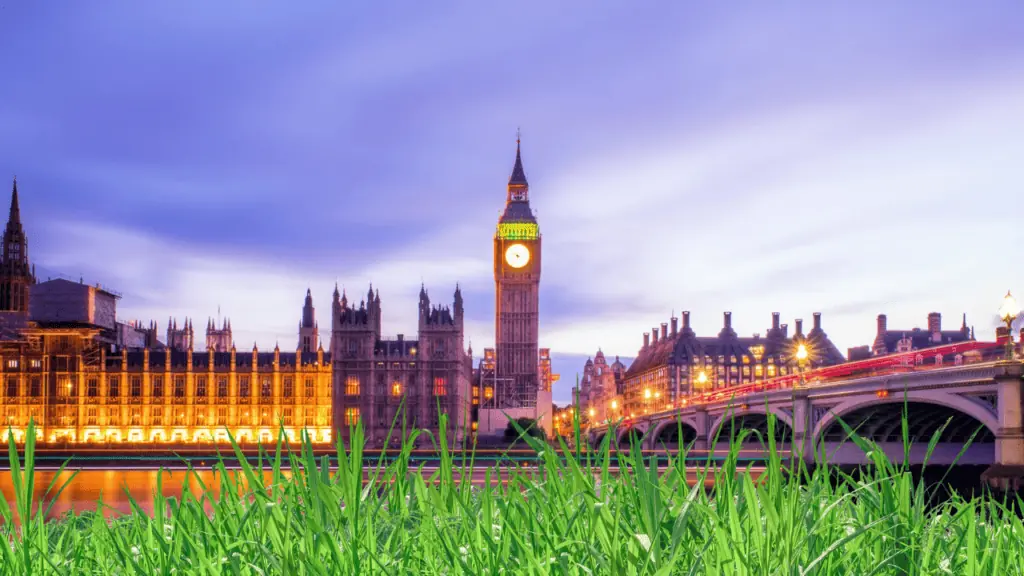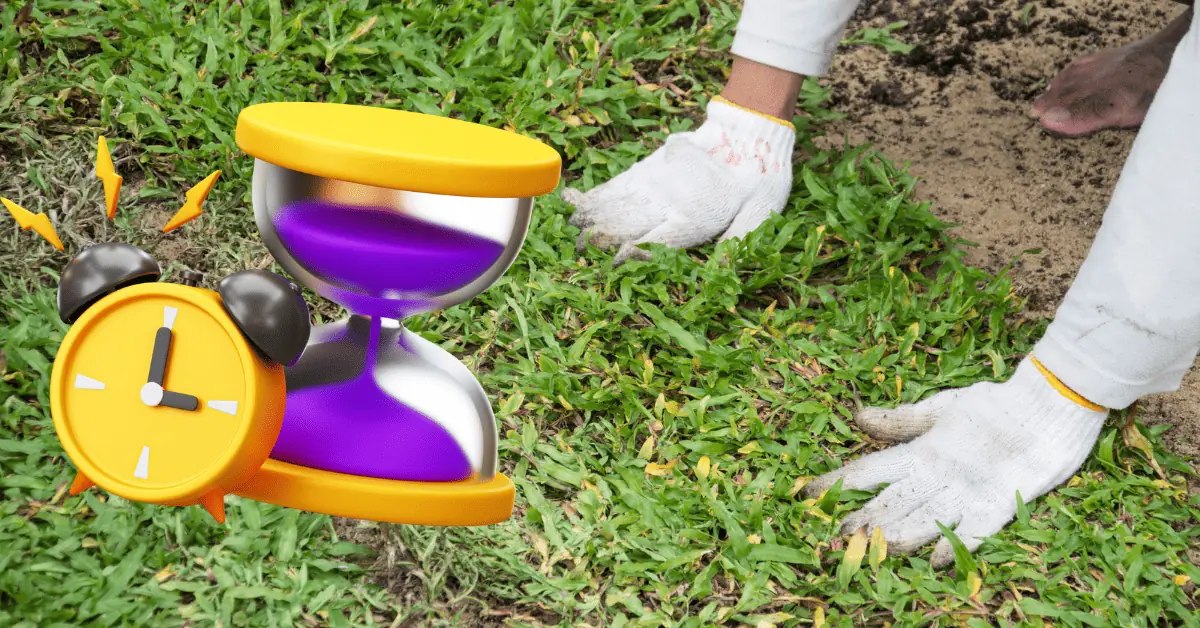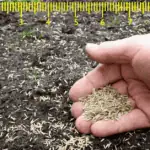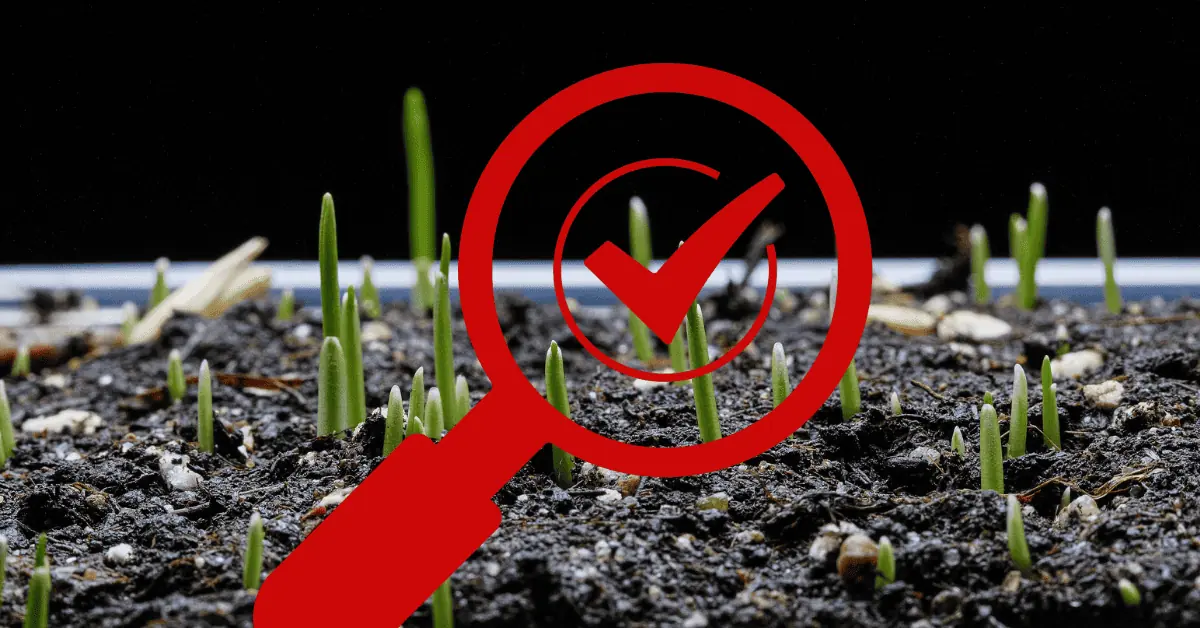Planting grass seed is more complex than buying a bag of seed and spreading it on your lawn. But the success of your yard depends a lot on the timing of the planting.
In London, where the weather can be unpredictable, it’s essential to know when to plant grass seed to give it the best chance of thriving.
Important Factors to Consider
The timing of grass seed planting in London depends on a few primary factors:
- Grass type
- Shade Tolerance
- Maintenance Needs
1. Grass Type
The type of grass you choose to plant also affects when you should plant it. London’s most planted grass types are Ryegrass, Fescue, and bluegrass. These grasses grow best when planted during the spring and autumn.
- Cool-Season Grasses: For London’s climate, grasses that thrive in cooler temperatures, like Kentucky Bluegrass, Perennial Ryegrass, and Fine Fescue, are suitable options. They thrive in cooler temperatures and tolerate the city’s weather variations.
- Heat and Drought Tolerance: Given occasional heatwaves and dry spells, consider grass seed varieties with higher heat and drought tolerance. It ensures your lawn remains vibrant during the summer months.
2. Shade Tolerance
London’s urban environment often presents challenges with shade from buildings, trees, and other structures. If your lawn receives partial shade or gets situated in shaded areas, consider grass seed varieties that get bred for shade tolerance.
Fine Fescue and specific shade-tolerant Kentucky Bluegrass cultivars are ideal for these conditions.
3. Maintenance Needs
Consider your desired level of lawn maintenance when choosing grass seed. Some grass types need more frequent mowing, fertilization, and care than others.
Check your availability and willingness to invest time and effort in lawn maintenance. It ensures the selected grass seed aligns with your desired maintenance commitment.
Recommended Grass Types for London
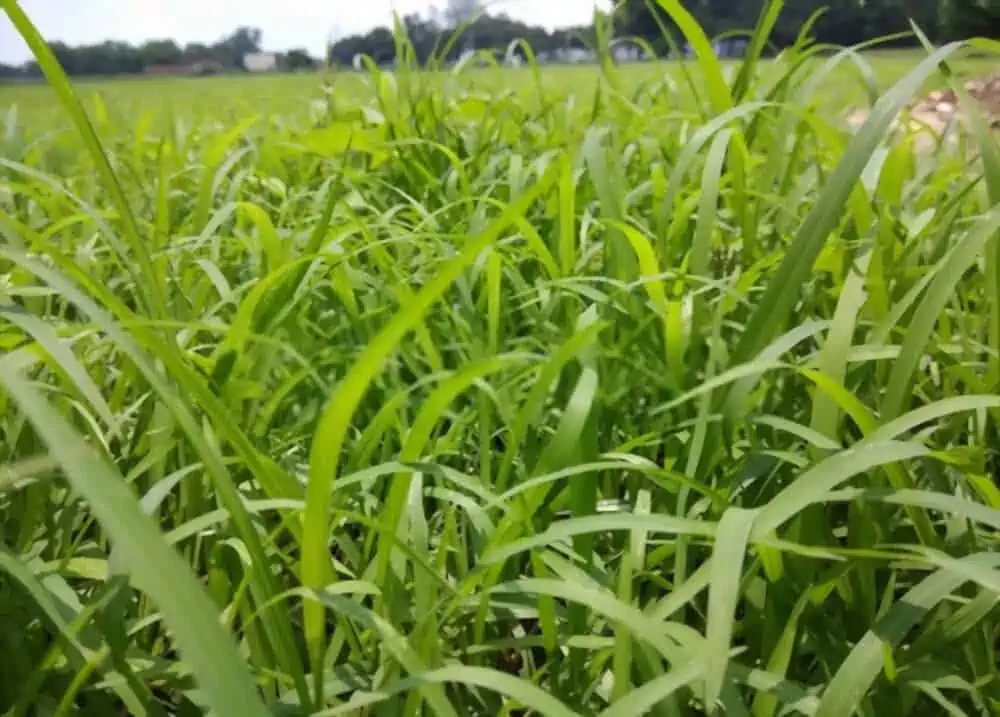
1. Perennial Ryegrass (Lolium perenne)
Perennial Ryegrass is a popular choice for lawns in London due to its adaptability and fast germination. Critical features of perennial Ryegrass include:
- Quick establishment: Perennial Ryegrass germinates fast. This makes it an excellent choice for filling in bare areas quickly.
- Durability: It exhibits excellent wear tolerance and can withstand heavy foot traffic, making it suitable for lawns with high usage.
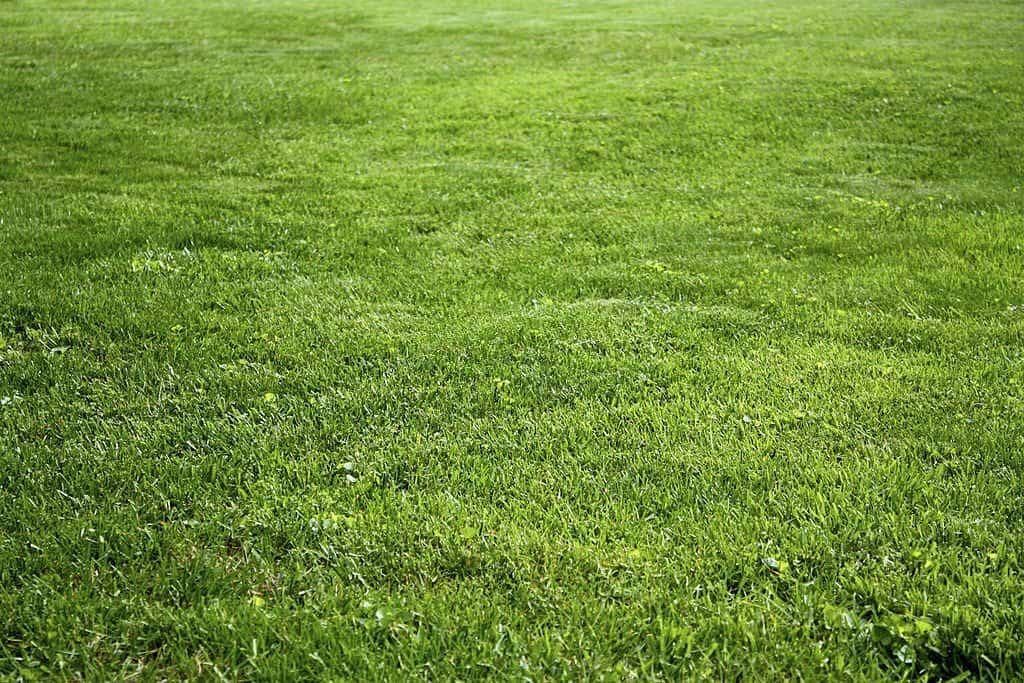
2. Kentucky Bluegrass (Poa pratensis)
Kentucky Bluegrass is another popular choice for lawns in London, known for its dense growth and rich green color. Critical features of Kentucky Bluegrass include:
- Dense and lush appearance: Kentucky bluegrass forms a thick and uniform turf with a lush green color, creating a pleasing lawn.
- Self-repairing ability: Kentucky bluegrass has good self-repairing capabilities. It fills in thin or damaged areas and maintains a uniform appearance.
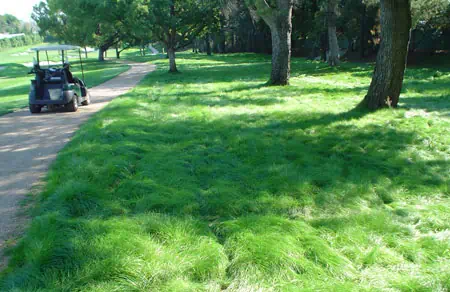
3. Chewings Fescue (Festuca rubra commutata)
Chewings Fescue is a fine fescue variety that thrives in London’s climate and offers unique characteristics. Critical features of Chewings Fescue include:
- Drought tolerance: It has excellent drought tolerance, making it suitable for areas with limited water availability or those prone to dry spells.
- Fine texture: It has a fine leaf texture, providing a soft and attractive appearance to the lawn.
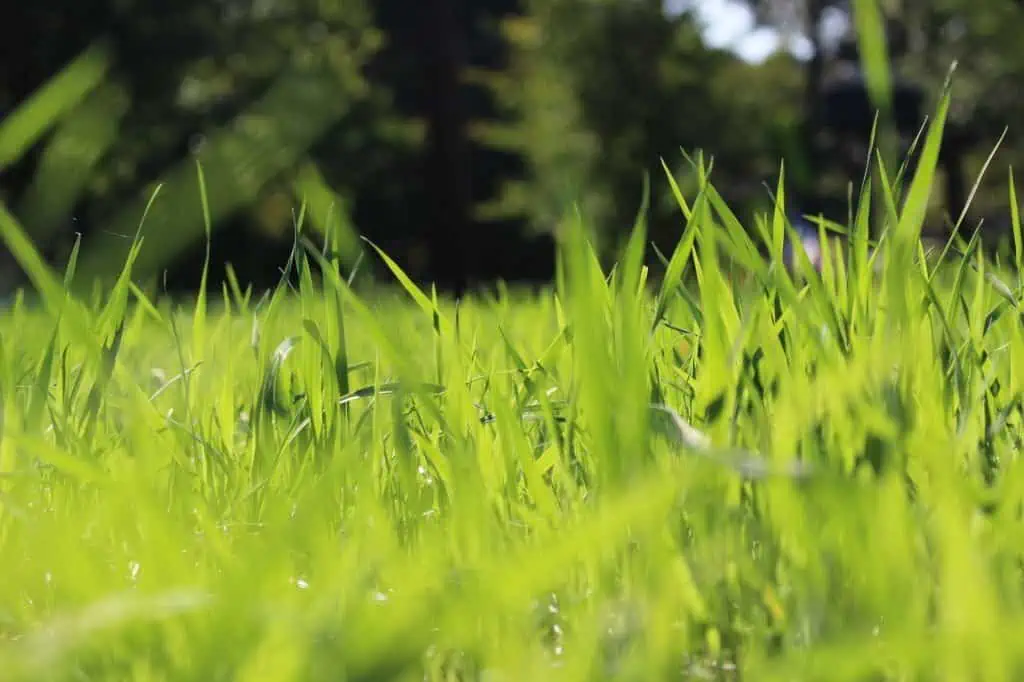
4. Tall Fescue (Festuca arundinacea)
Tall Fescue is a cool-season grass that performs well in London’s climate, offering several advantages. Critical features of Tall Fescue include:
- Coarse texture: Tall Fescue has a rougher texture than other grass types, which some homeowners prefer for its rugged appearance.
- Deep root system: It develops a deep root system, enhancing its drought tolerance and ability to access water and nutrients.

5. Fine Fescue Blend (Festuca spp.)
Fine fescue blends are a mixture of various delicate fescue grass species, including hard Fescue, creeping red Fescue, and sheep fescue. Critical features of fine fescue blends include:
- Adaptability: Fine fescue blends are adaptable to different soil types and environmental conditions, making them versatile for London’s diverse landscapes.
- Low maintenance: Fine fescue blends need minimal watering, mowing, and fertilization, making eco-friendly and low-maintenance choices.
When to Plant Grass Seed in London
If you’re looking for a lush and vibrant lawn in London, the key is to know when to plant your grass seed. Timing is everything when it comes to planting grass seeds. And planting at the right time is essential for ensuring your grass grows healthy and strong.
Fall Season
Planting in the fall also means your grass will be well-established by spring, allowing it to grow and flourish throughout the season.
While fall is generally an optimal time for grass seed planting, it is crucial to consider specific timing within the season for the best results. The following are the recommended times for fall seeding in London:
- Early Fall (September to Early October): Early fall is an excellent time to plant grass seed in London. The soil is still warm from the summer months. So, cooler temperatures create favorable conditions for seed germination and establishment.
- Mid-Fall (Mid-October to Early November): Mid-fall is another reasonable period for fall seeding. The soil remains warm, and there is usually enough rainfall to support grass seed growth before winter.
Note: Aim to seed at least six weeks before the first expected frost to allow the grass seedlings to establish before winter.
Advantages of Fall Seeding
Fall seeding provides several advantages that contribute to successful lawn establishment in London:
- Optimal Growing Conditions: Fall offers cooler temperatures favorable for grass seed germination and establishment. The warm soil and cool air create an ideal environment for root development, leading to more robust and healthier turf.
- Ample Moisture: London experiences consistent rainfall during the fall season, providing natural irrigation for seeded areas. The moisture helps the grass seed germinate, establish roots, and grow without relying on extra watering.
- Extended Root Growth: By seeding in the fall, the grass seedlings have a more extended period to establish their root systems before winter. This profound root growth enhances the lawn’s resilience, drought tolerance, and health.
Spring Season
While fall is the ideal time to plant grass seed in London, it’s not the only time. You can also plant grass seeds in the spring, although growing in the fall is better. Spring planting can be risky, as the planted grass can get damaged by late frosts or hot and dry summer weather.
While spring is generally an optimal time for grass seed planting, it is essential to consider specific timing within the season for the best results. The following are the recommended times for spring seeding in London:
- Early Spring (March to Mid-April): Early spring is an ideal time to plant grass seed in London as temperatures increase. The soil is starting to warm up, and there is enough moisture from spring rains to support seed germination.
- Late Spring (Mid-April to May): Late spring is another suitable period for grass seed planting in London. The soil has warmed up by this time, and consistent rainfall continues to support seedling growth.
Note: It is vital to track local weather conditions. And soil temperature trends when determining the exact timing for spring seeding. Aim for a consistent soil temperature of around 50°F (10°C) or above for optimal germination.
Advantages of Spring Seeding
Spring seeding offers several advantages that contribute to successful lawn establishment in London:
- Extended Growing Season: You take advantage of the extended growing season by planting grass seeds in spring, allowing the grass seedlings to establish robust root systems. And develop healthy turf before the onset of summer stresses.
- Optimal Soil and Air Temperature: During spring, the soil temperature rises, creating favorable conditions for seed germination. The air temperatures are also mild, providing an ideal environment for grass growth.
- Reduced Weed Competition: Spring seeding gives your grass seed a head start on weed competition. With the active growth of grass seedlings, they can outcompete weeds, minimizing their establishment in the lawn.
Conclusion
The best time to plant grass seed in London is in the autumn. But, if you miss the autumn planting window, spring is the next best time to plant grass seed.
If you need to plant grass seed in the summer, it’s essential to do it early and prepare to deal with heat and drought stress.
